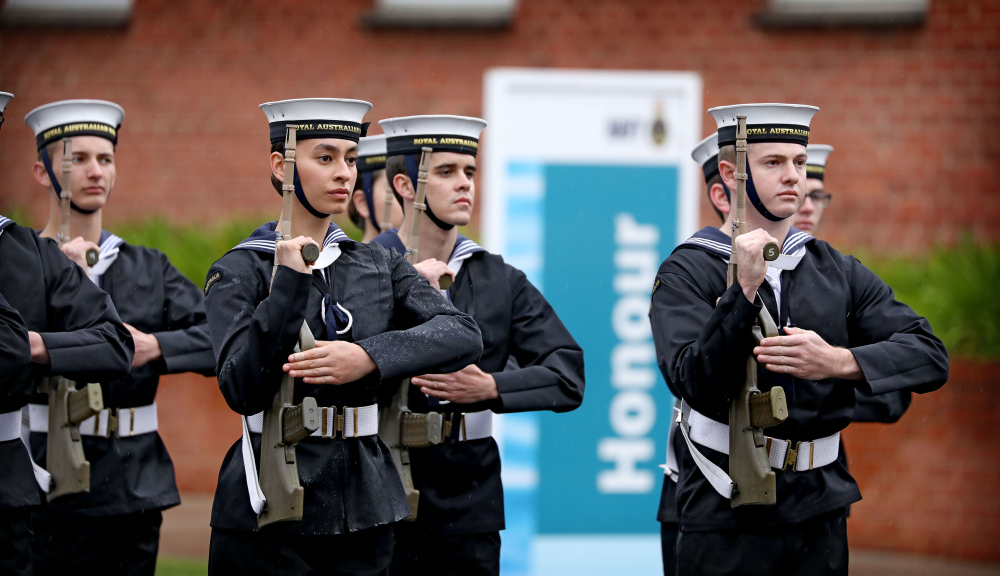
The size of the Royal Australian Navy’s workforce must increase if the service is to maintain its rising operational tempo, says Vice Admiral Mike Noonan.
‘We’ve a navy heading towards 12 submarines, 12 surface combatants, 12 offshore patrol vessels’, the navy chief told
The Strategist. ‘And if you accept the requirement for us to be conducting more sustained operations off the Australian station, achieving our future workforce milestones is going to be absolutely critical.’
Noonan says he’s considering very closely what the navy of the future will look like and a key factor will be the men and women who will run it. ‘I’ve got some work going on at the moment to review and analyse what further increases we might need to seek approval for into the future.
‘I expect that without growing, it’s going to be very difficult for us to maintain our current tempo and accept these future platforms.’
In a fast moving, high-tech world, the navy is planning now to recruit people who will be able to fill roles that don’t exist yet. ‘There are jobs in our future navy that are yet to be defined’, Noonan says. ‘As we bring capabilities to life in the coming years, we need to ensure that we’ve got the right people trained at the right time and in the right place to take delivery and ultimately bring those capabilities into service. So, we have a big focus on workforce.’
Noonan says he’s long believed that the navy doesn’t have enough people and that retention of current personnel is crucial to its future.
‘We have struggled over the last few years to do everything that we are asked to do with a workforce that has typically been about 1,000, 1,500 people understrength. The approved size of the navy has not been met.’
Some of the reduction in size of the naval workforce had been deliberate, as when it downsized at the end of the aircraft carrier era with the decommissioning of HMAS
Melbourne. The manning of some vessels with civilian crews under the commercial support program also brought a reduction in the uniformed workforce. Personnel were also attracted away by other changing dynamics with opportunities elsewhere in the economy.
A lot of work is going into planning the workforce to crew, operate, test and support the fleet of 2035, the navy chief says. ‘We’ve been working on that over the last couple of years and I’m delighted to say that we’re starting to see some green shoots and some very positive progress around the size of our workforce.
‘We’ve currently got an authorised strength of around about 15,500 people to be in place by the mid-2030s and we’re on a pretty steady trajectory to achieving that.
‘My greatest challenge over the next couple years is to get the shape and the depth of it right.’
Noonan says he doesn’t see the navy’s operational tempo regionally, internationally or globally reducing anytime soon. ‘This new step-up in the Middle East is likely to require us to be involved in that new line of effort for some time. The step-up in the southwest Pacific is clearly an important but an emerging task that the government is clearly committed to.
‘And it’s important that we are present in Southeast and Northeast Asia.’
The workforce will be critical to all of that, says Noonan, and the navy is working hard on recruiting. This year, about 1,400 sailors joined, compared with 800 in recent years, and around 170 midshipmen started at the Royal Australian Naval College, HMAS
Creswell.
Retention of personnel has been a very big focus over the past 12 months. ‘We’ve done quite a bit with respect to improving the conditions of service and workplace conditions for our people in a determined effort to see them stay longer. And I’m delighted to say that our current separation rate from navy at 7.8% is the lowest it’s been for a number of years. So, things are starting to turn the corner and I’m pretty optimistic about that.’
Noonan says he was often told in his first 12 months as navy chief that the service needed to provide better career management.
‘I've listened to that, and we are currently in the process of standing up a new category within navy for both our officers and sailors, which is absolutely focused on the professional HR function that is essential to our future workforce growth and retention. Becoming more aligned and more focused on truly managing that HR capability is crucial.’
 Print This Post
Print This Post